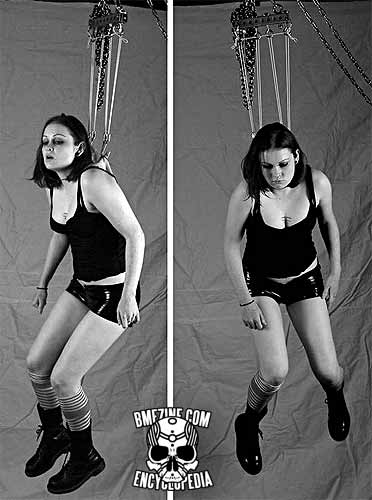Suicide Suspension
A suicide suspension (named because it looks as if the person has been hanged) is a vertical suspension done through one or more flesh hooks (generally four) placed through the skin of the upper back. This is one of the easier, less confining suspensions and one that many people choose to start with—vertical back suspensions generally allow greater freedom of movement while suspended (the arms and legs not usually being pierced and thus free to move). This can be a pro or a con depending on the person.
Suicide suspension is definitely the favorite style to date, although, this suspension can often be too difficult for first time suspendees because there is more weight per hook than with horizontal suspensions, making the initial lift more painful. Other than this normal pain from suspending, the most common complaint is lower back pain.
This suspension was originally named the Hangman Suspension by Allen Falkner, but "people didn't like it so I changed it to suicide".
